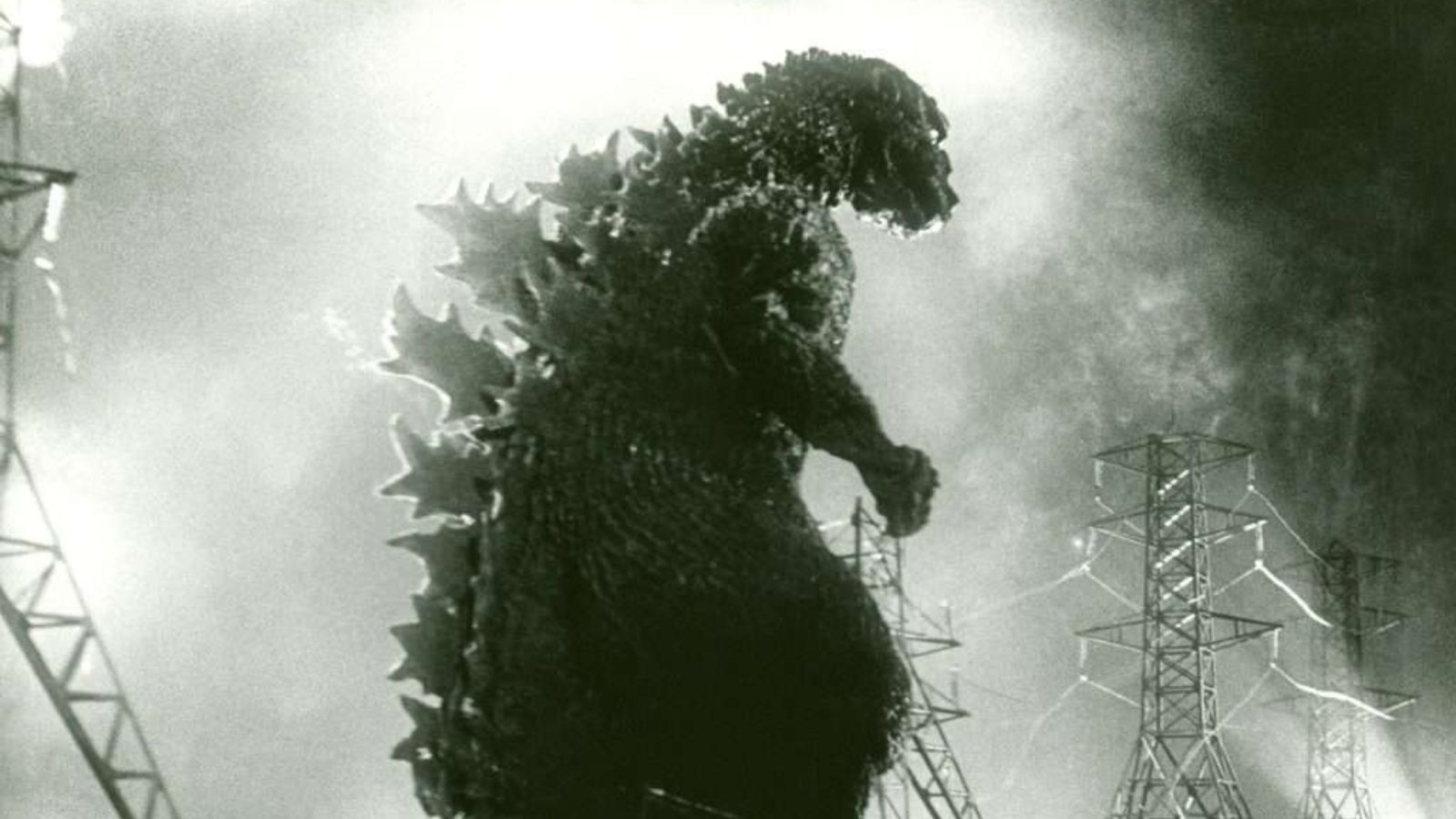Don't miss your future favorite film!
Subscribe to our newsletter and get the latest updates from the SIFF community delivered straight to your inbox.
Don't miss your future favorite film!
Subscribe to our newsletter and get the latest updates from the SIFF community delivered straight to your inbox.
Justin Robert Vinall | Thursday, March 21, 2024

On a Friday night, I sat in the SIFF Cinema Egyptian, my favorite indie theater in Seattle, in an auditorium with a multi-generational audience. Some rewatching this special film, others diving into it for the first time. When the film starts, a black frame with Japanese kanji for “Godzilla” rises from the darkness. Then the iconic roar demands silence, followed by the echoes of massive footsteps as the opening credits roll. 70 years of Godzilla feels good in a place like this.

I’ve been a lifelong Godzilla fan for as long as I can remember loving dinosaurs. My passion for the 165-foot tall monster can be traced back to one pivotal person in my life—my grandmother. She introduced me to Jurassic Park when I was three years old and, like any child of the ‘90s, I obsessed over dinosaurs. What she didn’t realize was the profound effect Godzilla would have on me when she picked up a VHS copy of Godzilla vs. the Sea Monster (the American title for Ebirah, Horror of the Deep) from Suncoast Video. It would be the first time I witnessed Godzilla on screen. Breaking through that seaside mountain in thunderous weather would forever change me as a moviegoer and cement me as a massive Godzilla fan. As I watched more of these films, especially the Heisei era, I noticed messages about nature, mankind’s relationship with technology, evolution, science, and so much more. But what became very apparent as I grew older and absorbed these films is the nuclear themes that are deeply-rooted in Godzilla.
At that point the only available version of the original film was the 1956 American edit, Godzilla, King of the Monsters! It centers its focus on characters (like adding in actor Raymond Burr) and removes political themes. I wouldn’t be able to see the original Japanese film until 2006 when Classic Media released the original and the 1956 American edit as a DVD set. What is great about this set is the wealth of history showcased in the featurettes. For example, there’s one featurette about the renowned special effects artist Eiji Tsuburaya creating the 220 pound Godzilla suit, as well as a featurette about writing this thoughtful and relevant story on Japan’s trauma, anxieties, and fears in a post-World War II.
I was used to watching Godzilla attack cities with no regard as he rumbles with other out-of-this-world monsters, like the three-headed dragon King Ghidorah, or his bionic clone MechaGodzilla. But when I go back and watch Godzilla, I am astounded by the vast devastation Godzilla leaves in a trail of fire. As a result, some characters want to study Godzilla while others want to destroy him with weapons far worse than the beast itself.
Gojira is not only an important cinematic achievement for its time, but the impact the franchise has had since its debut has been felt for generations. As of 2014, there has been an American reboot with Godzilla leading the Monsterverse for Legendary Pictures and, at the end of this month, he’ll be working alongside King Kong in the upcoming buddy-action film Godzilla X Kong: The New Empire.
Back at Godzilla’s home of Toho Studios, many projects have received global attention, such as 2016’s Shin Godzilla, reinvigorating pop culture’s interest with the giant. And, as of March 10, he’s not only King of the Monsters but also an Academy Award Winner for the visual effects in Godzilla Minus One, leading to a new golden age of Godzilla appreciation. With a total of 38 films and counting, we celebrate Godzilla’s achievements in filmmaking, his place in pop culture, and his dramatic and comedic abilities. However, we must remember why Godzilla was created in the first place as a cautionary tale of mankind’s hubris, the power of destruction, the impact of science meddling with nature, government neglect, and the fear that we have our own Godzillas in the real world. It just may not come in the form you expect it to be.

When the Friday night screening reached its conclusion, I walked out of the theater watching people’s eyes alight by what they had seen. There were spirited conversations about Godzilla, sharing the impact it had on them. The monster always felt like something I fawned over alone and rooted onward for years in a vacuum, so it was comforting to see many moviegoers embrace the King of the Monsters after so long.
Don't miss your future favorite film!
Subscribe to our newsletter and get the latest updates from the SIFF community delivered straight to your inbox.
Don't miss your future favorite film!
Subscribe to our newsletter and get the latest updates from the SIFF community delivered straight to your inbox.